C. Alejandro Parraga
Comp. Sci. Dept., Engineering School, Universitat Autònoma de Barcelona, Computer Vision Centre, Campus UAB, Bellaterra, 08193, Barcelona, Spain
Aesthetics Without Semantics
May 08, 2025Abstract:While it is easy for human observers to judge an image as beautiful or ugly, aesthetic decisions result from a combination of entangled perceptual and cognitive (semantic) factors, making the understanding of aesthetic judgements particularly challenging from a scientific point of view. Furthermore, our research shows a prevailing bias in current databases, which include mostly beautiful images, further complicating the study and prediction of aesthetic responses. We address these limitations by creating a database of images with minimal semantic content and devising, and next exploiting, a method to generate images on the ugly side of aesthetic valuations. The resulting Minimum Semantic Content (MSC) database consists of a large and balanced collection of 10,426 images, each evaluated by 100 observers. We next use established image metrics to demonstrate how augmenting an image set biased towards beautiful images with ugly images can modify, or even invert, an observed relationship between image features and aesthetics valuation. Taken together, our study reveals that works in empirical aesthetics attempting to link image content and aesthetic judgements may magnify, underestimate, or simply miss interesting effects due to a limitation of the range of aesthetic values they consider.
Colour Constancy: Biologically-inspired Contrast Variant Pooling Mechanism
Nov 29, 2017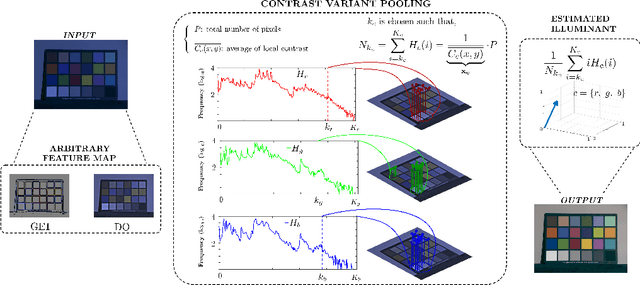
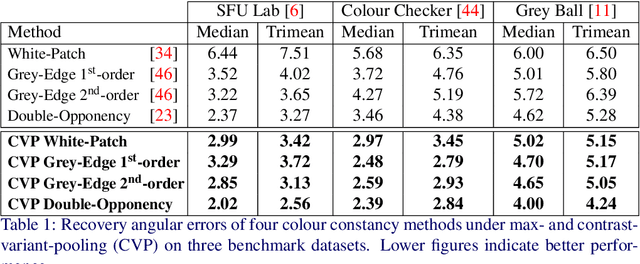
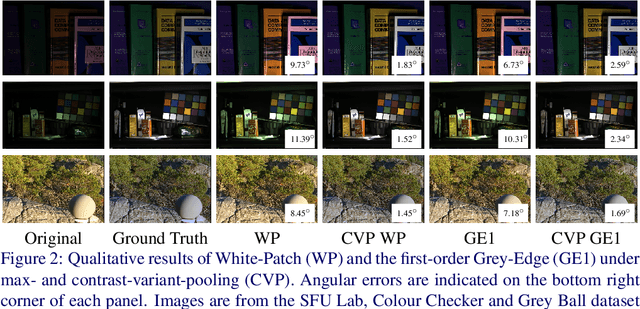

Abstract:Pooling is a ubiquitous operation in image processing algorithms that allows for higher-level processes to collect relevant low-level features from a region of interest. Currently, max-pooling is one of the most commonly used operators in the computational literature. However, it can lack robustness to outliers due to the fact that it relies merely on the peak of a function. Pooling mechanisms are also present in the primate visual cortex where neurons of higher cortical areas pool signals from lower ones. The receptive fields of these neurons have been shown to vary according to the contrast by aggregating signals over a larger region in the presence of low contrast stimuli. We hypothesise that this contrast-variant-pooling mechanism can address some of the shortcomings of max-pooling. We modelled this contrast variation through a histogram clipping in which the percentage of pooled signal is inversely proportional to the local contrast of an image. We tested our hypothesis by applying it to the phenomenon of colour constancy where a number of popular algorithms utilise a max-pooling step (e.g. White-Patch, Grey-Edge and Double-Opponency). For each of these methods, we investigated the consequences of replacing their original max-pooling by the proposed contrast-variant-pooling. Our experiments on three colour constancy benchmark datasets suggest that previous results can significantly improve by adopting a contrast-variant-pooling mechanism.
Colour Terms: a Categorisation Model Inspired by Visual Cortex Neurons
Sep 19, 2017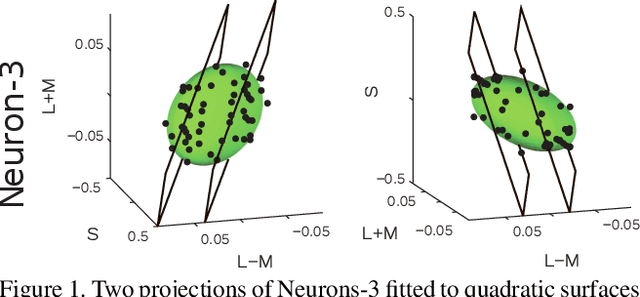
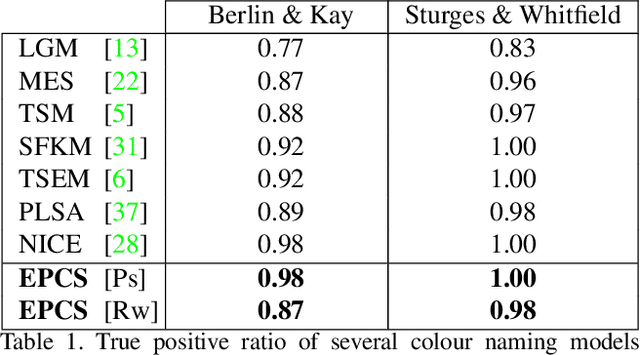
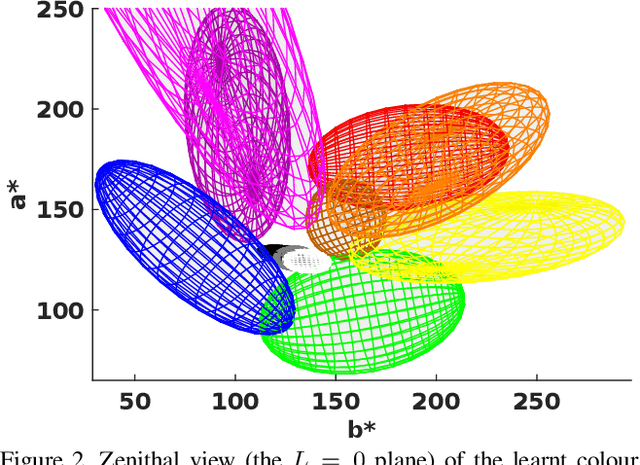
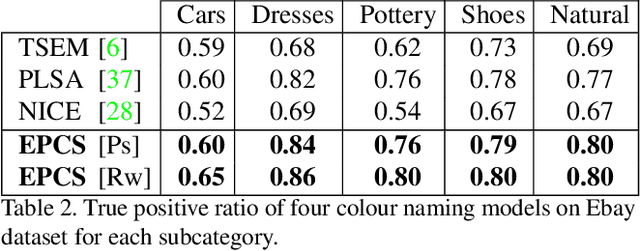
Abstract:Although it seems counter-intuitive, categorical colours do not exist as external physical entities but are very much the product of our brains. Our cortical machinery segments the world and associate objects to specific colour terms, which is not only convenient for communication but also increases the efficiency of visual processing by reducing the dimensionality of input scenes. Although the neural substrate for this phenomenon is unknown, a recent study of cortical colour processing has discovered a set of neurons that are isoresponsive to stimuli in the shape of 3D-ellipsoidal surfaces in colour-opponent space. We hypothesise that these neurons might help explain the underlying mechanisms of colour naming in the visual cortex. Following this, we propose a biologically-inspired colour naming model where each colour term - e.g. red, green, blue, yellow, etc. - is represented through an ellipsoid in 3D colour-opponent space. This paradigm is also supported by previous psychophysical colour categorisation experiments whose results resemble such shapes. "Belongingness" of each pixel to different colour categories is computed by a non-linear sigmoidal logistic function. The final colour term for a given pixel is calculated by a maximum pooling mechanism. The simplicity of our model allows its parameters to be learnt from a handful of segmented images. It also offers a straightforward extension to include further colour terms. Additionally, ellipsoids of proposed model can adapt to image contents offering a dynamical solution in order to address phenomenon of colour constancy. Our results on the Munsell chart and two datasets of real-world images show an overall improvement comparing to state-of-the-art algorithms.
 Add to Chrome
Add to Chrome Add to Firefox
Add to Firefox Add to Edge
Add to Edge